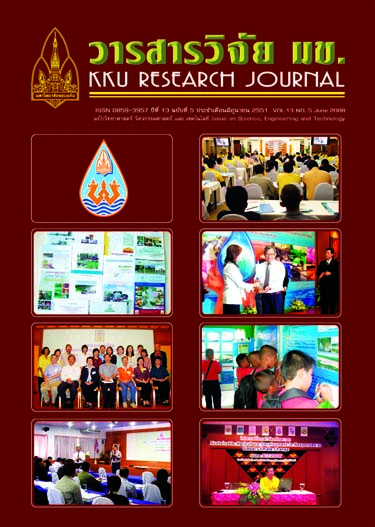Using of artificial light combination with daylight in interior.(Thai)
Main Article Content
Abstract
Using daylight within buildings can effectively save electrical energy consumption. However controlling daylight is difficult because of the impact of variations in sky conditions. This paper presents a study of methods to save electrical energy in buildings, with application to interior lighting by dimmable electronic ballast to control artificial light in association with daylight. The artificial light is generated by fluorescent lamps and daylight through the window. The experiments were performed in two rooms of 2.2 m x 4.9 m x 3.4 m. The 1.6 m x 2.2 m window openings were located in a northeast direction. The lumen method was applied in the design of fluorescent lamps size 1x36 watt at an average illuminance of 500 lux for each room. Two dimmable electronic ballasts were installed in the first room for fluorescent lamps. The dimmable electronic ballasts were not installed in the second room. The testing period was taken from 7.00 a.m. to 5.30 p.m. as a typical working duration. The comparisons of interior illuminance and electrical power in case of window opening of 50%, 70% and 100% between room with dimmer and without dimmer showed that the room without a dimmer consumed electrical power 1.15, 1.25 and 1.48 times higher respectively than the room with a dimmer. From this study, in the case of window opening of 50%, 70% and 100% it was indicated that high intensity of the fluorescent lamps occurred at window opening of 100%. It can be concluded that the integration of daylight and artificial light can save 32 % of electrical consumption in an illuminance system. The results from this test show that daylight can be applied for interior office lighting in order to reduce energy consumption for buildings.


